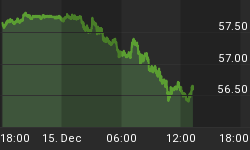Every student who took Econ 101 and stayed awake during the lectures learned that the Federal Reserve has the power to create credit figuratively "out of thin air." The A-students also learned that the commercial banking system, not individual banks, under the fractional-reserve system that we and every other developed economy has also has the power to figuratively create credit out of thin air if the Federal Reserve first provides the "seed" money to do so. This is not unique to the Federal Reserve and the U.S. commercial banking system. This holds wherever there are central banks and fractional-reserve commercial banking systems. So, when there is an increase in the sum of Federal Reserve credit and commercial banking system credit, credit is created out of thin air, which is akin to "printing money." When there is an increase in the sum of Federal Reserve credit and commercial banking system credit, some entity's debt is being "monetized." Until the first round of quantitative easing was initiated by the Fed at the end of November 2008, the Fed had mostly restricted its debt monetization to Federal debt. Then, in the first round of quantitative easing, the Fed began monetizing large amounts of private debt in the form of mortgage-backed securities. Because Treasury securities comprise a small proportion of commercial banking system credit, the bulk of debt monetized by the commercial banking system is private debt.
Chart 1 shows the history of "money printing "/ "debt monetization" from 1953 through 2009 in the U.S. The median annual percentage change in money printing / debt monetization during this period was 7.5%. In 2009, for the first time during this period, money printing/debt monetization contracted. In the 12 months ended October 2010, the fastest 3-month annualized growth in money printing/debt monetization was a paltry 1.1% (see Chart 2). The Fed has said that it plans to purchase $600 billion of Treasury securities by the end of June 2011. If Federal Reserve credit were to increase by $600 billion and commercial banking system credit were to remain unchanged between the end of October 2010 and the end of June 2011, then the sum of Federal Reserve credit and commercial banking system credit would have increased by 5.2%, at an annualized rate over this 8-month period of 7.9% and 5.6% over the June 2010 level.
Chart 1
Chart 2
So, here are the important take-aways (see, I'm hip to corporate lingo) from this commentary. Whenever the sum of Federal Reserve credit and commercial banking system credit increases, credit is being created out of thin air and some kind of debt is being monetized. Assuming that the commercial banking system does not create any net new credit between now and the end of June 2011, the magnitude of the credit creation being contemplated by the Fed is not extraordinary in an historical context. And, it is not an extraordinary increase in credit creation given the current amount of resource underutilization in the U.S. economy. So, being shocked by the implications of QE2 with respect to "printing money" and the "monetization of debt" would appear to be either naïve or hypocritical.
Paul Kasriel is the recipient of the2006 Lawrence R. Klein Award for Blue Chip Forecasting Accuracy
















